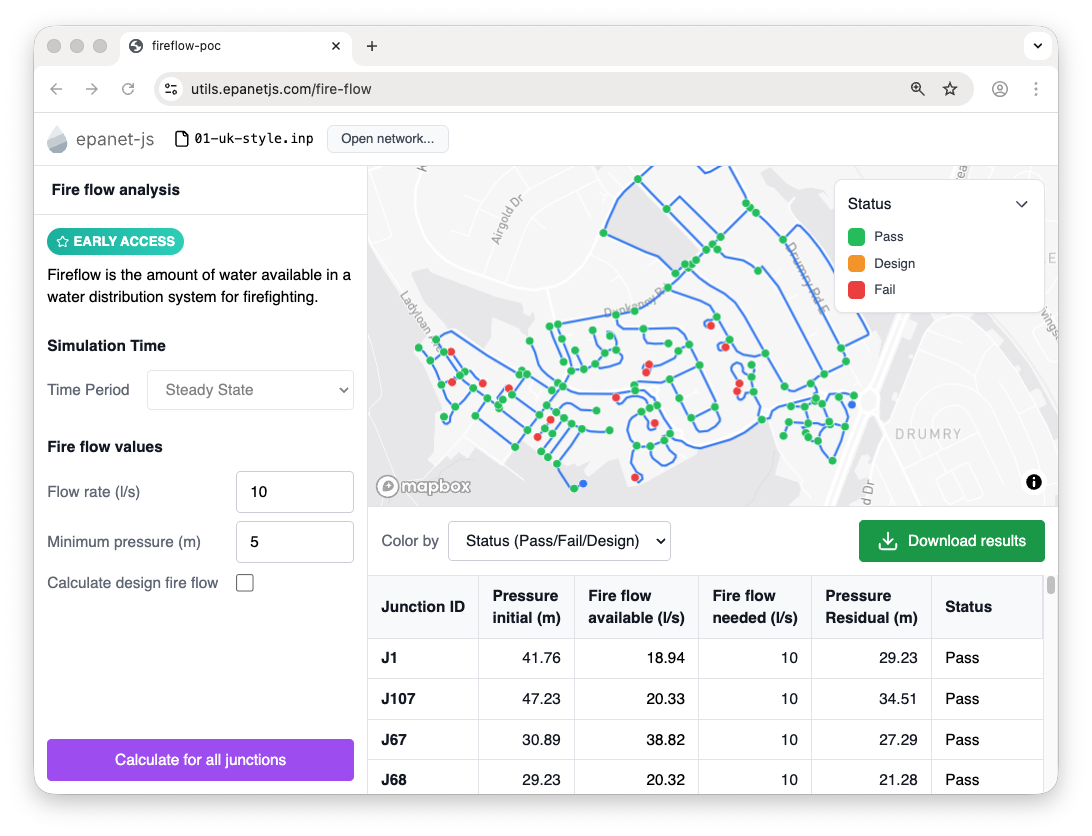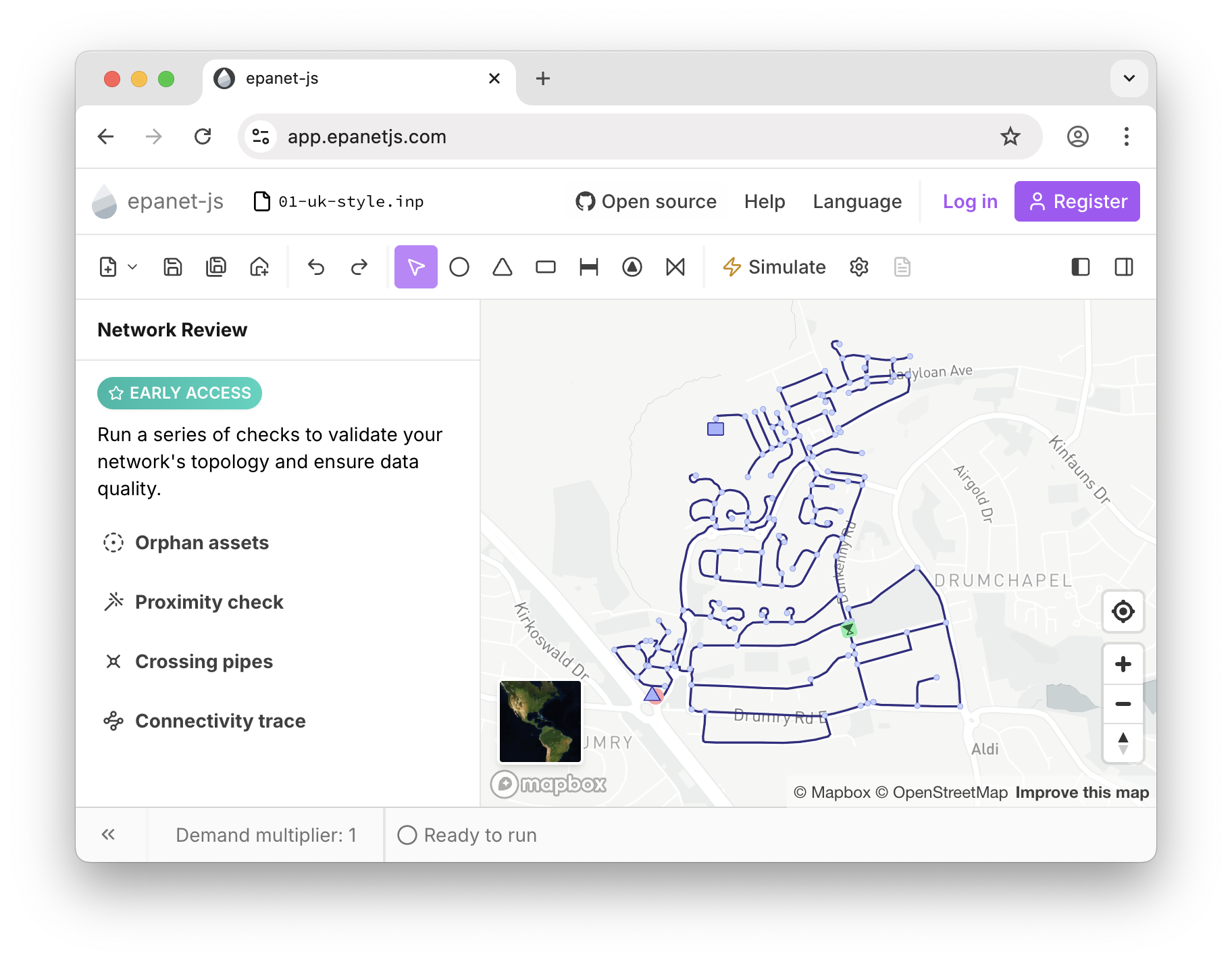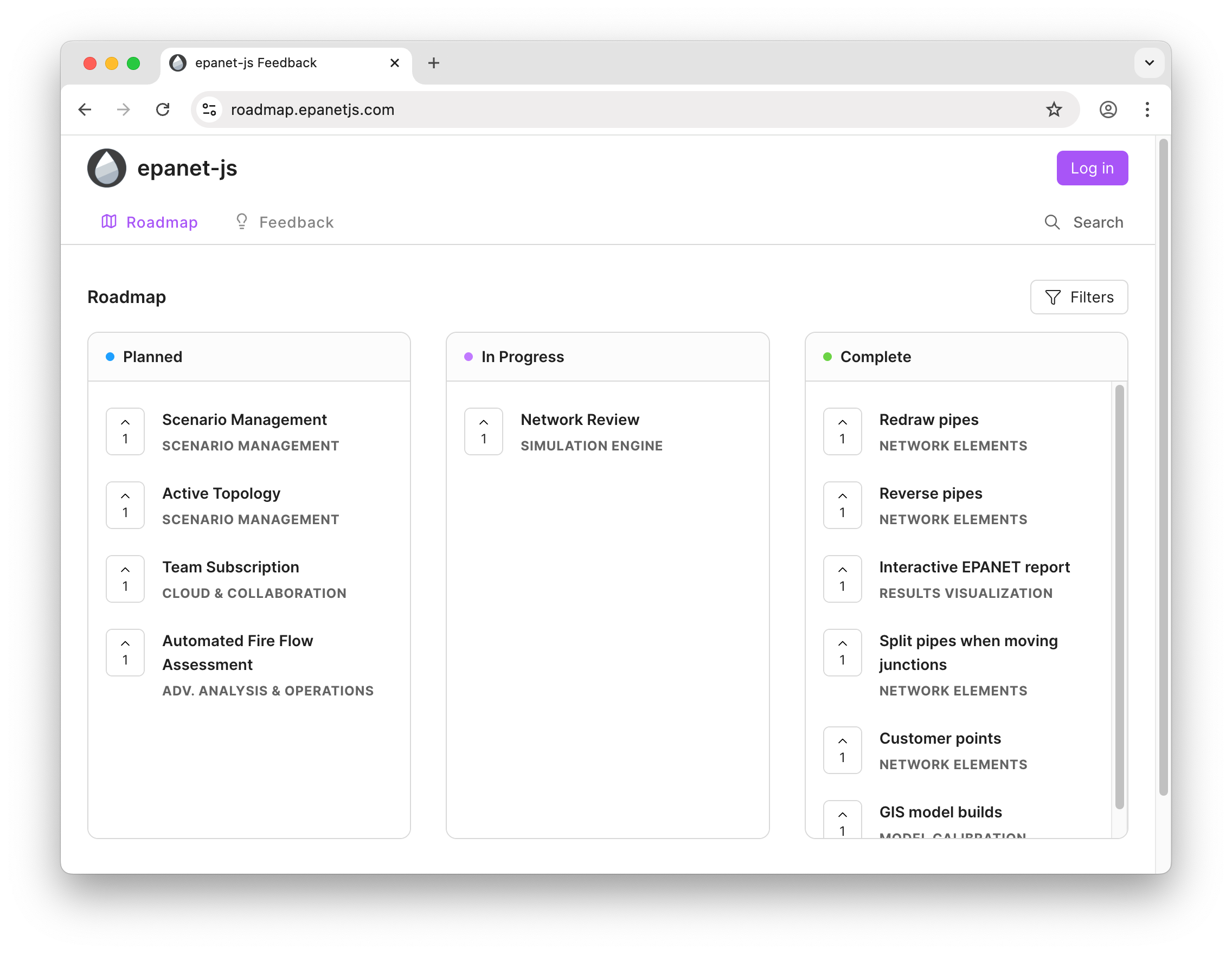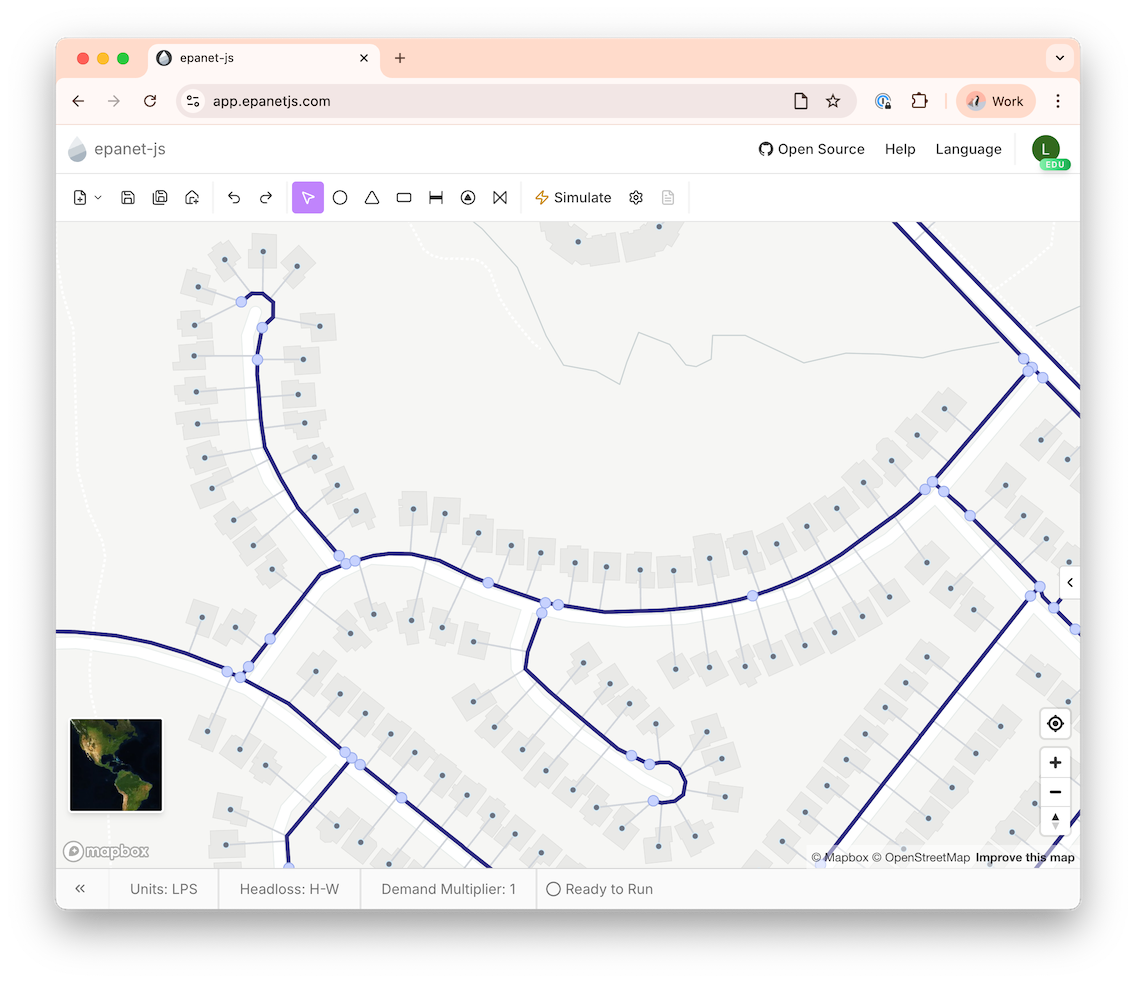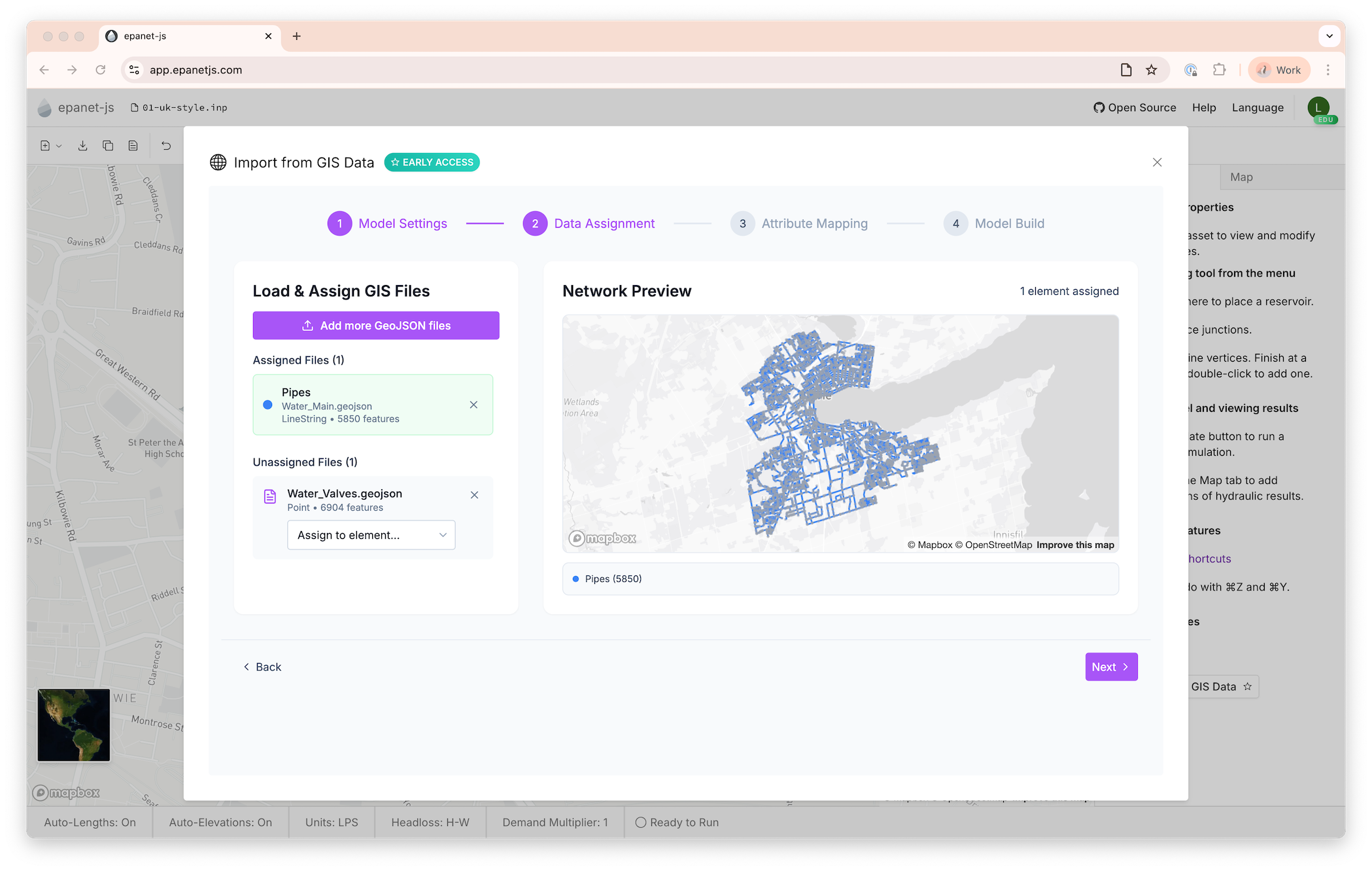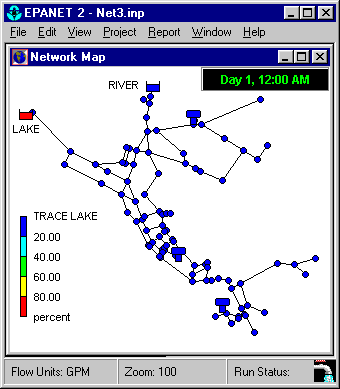epanet-js November 2025 Progress Report
Active topology, pump curves, and a new suite of utilities
It’s been another big, busy month working at epanet-js. We’ve been working across the board on three main features—Active Topology, Pump Curves, and Selections—to build up the fundamentals for some major capabilities coming next.
But we’ve also launched a range of interesting new utility tools. The standout is our new Fire Flow Analysis, which allows you to run thousands of simulations directly in your browser to instantly check your network's capacity to supply fire flows.
